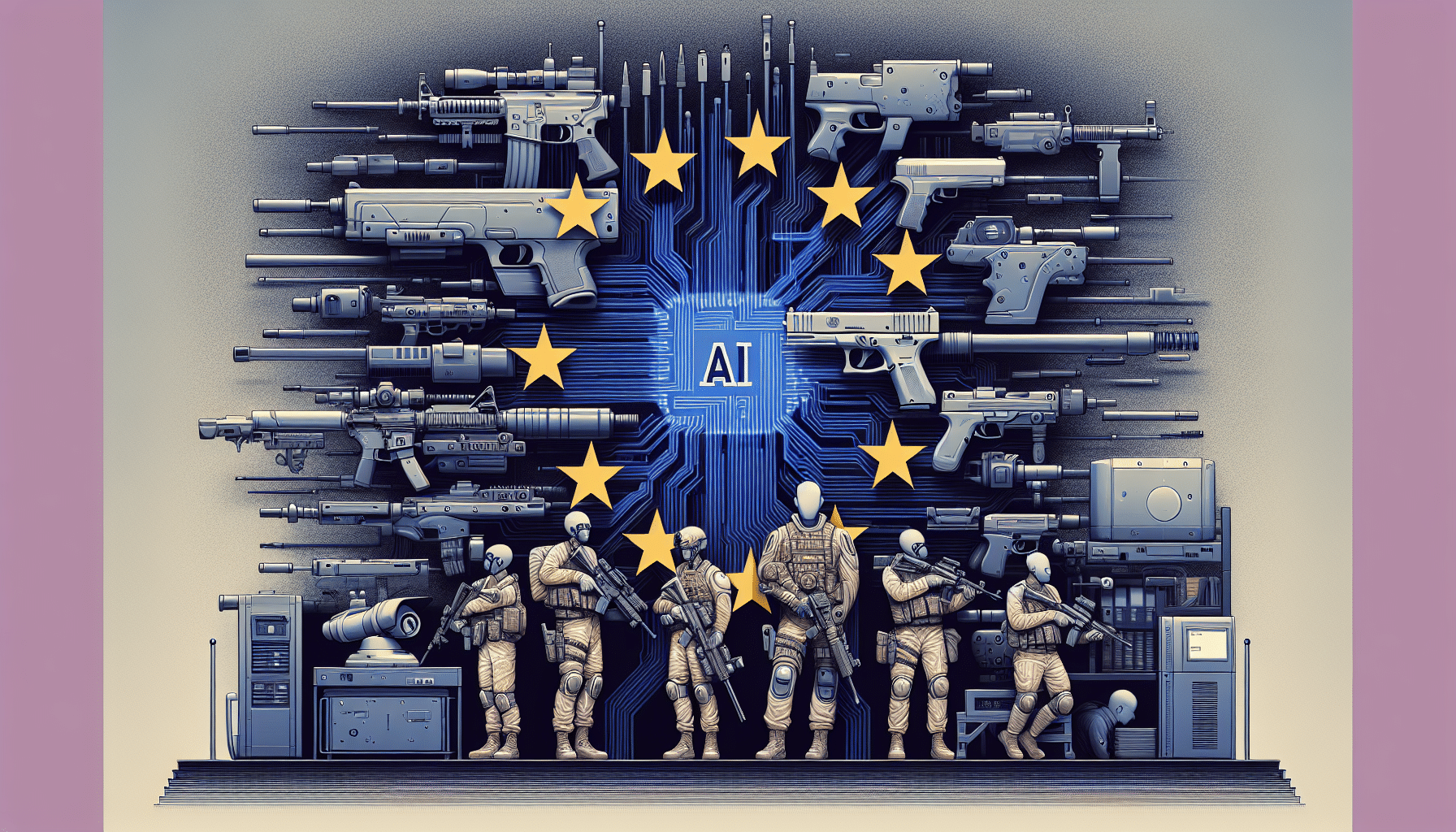About eldris
At Eldris, we automate SEO, multilingual site expansion, and EU compliance for brands scaling across Europe. Our AI-powered platform handles everything from content publishing to regulatory docs—so you don’t have to.
In This Article
- EU AI Compliance is mandatory for any business operating or offering AI systems within the EU.
- High-risk AI applications require conformity assessments, documentation, and transparent governance mechanisms.
- AI tools can automate risk assessments, documentation, and real-time regulatory monitoring.
- Common compliance pitfalls include poor documentation, biased datasets, and inadequate staff training.
- Choosing the right LegalTech platform ensures long-term scalability, data security, and audit readiness.
- Future trends point toward predictive regulatory modelling and blockchain-enabled compliance tracking.
Understanding the EU AI Act
Assessing Regulatory Intent and Scope
The EU AI Compliance framework represents a monumental shift in the way artificial intelligence systems are governed and utilised across member states. Introduced as the EU AI Act, this legislation aims to ensure that AI technologies deployed within the European Union adhere to ethical principles, data protection laws, and fundamental human rights. At its core, EU AI Compliance seeks to balance innovation with responsibility, providing a risk-based classification of AI systems into prohibited, high-risk, and low-risk categories.
According to the Act, high-risk AI applications—such as those used in recruitment, biometric identification, and credit scoring—are subject to strict transparency and data governance requirements. EU AI Compliance frameworks must include risk management protocols, human oversight mechanisms, and robust bias mitigation strategies. Furthermore, providers and deployers of AI systems must maintain detailed documentation to demonstrate conformity with the regulation. These structured demands necessitate the development of compliance cultures within organisations that hinge on proactivity rather than reactivity.
The scope of the EU AI Act transcends borders. Not only does it impact entities physically based within the EU, but it also extends its jurisdiction to providers and distributors of AI systems that affect individuals or operations inside the bloc. Hence, EU AI Compliance becomes a universal requisite for any business touching the European market, irrespective of its geographical presence or sector of industry.

Implications for Businesses Operating in the EU
Legal Obligations and Operational Risks
Businesses that fall within the catchment of the EU AI Act must undergo a meticulous evaluation of their AI systems. EU AI Compliance mandates legal obligations that vary depending on the categorisation of the AI system in use. For example, high-risk systems require conformity assessments, audits, and CE marking before deployment. Failure to comply may attract substantial fines, reaching up to €30 million or 6% of global annual turnover, whichever is higher. These figures underscore the gravity of operational risks involved in noncompliance.
Beyond financial repercussions, businesses face reputational damage, loss of customer trust, and potential suspension of operations. Therefore, smart enterprises are turning to LegalTech solutions and AI platforms to automate detection, documentation, and risk assessments. Adopting these tools not only streamlines the process but significantly reduces human error. EU AI Compliance transforms from a mere regulatory obligation into a strategic imperative for staying competitive, compliant, and credible.
“By embedding regulatory compliance into digitised workflows, organisations can meet EU AI Compliance requirements while boosting overall efficiency and transparency.”
How AI is Revolutionizing Compliance Workflows
Artificial intelligence has become a game-changer in the realm of regulatory compliance. Through machine learning algorithms, natural language processing, and predictive analytics, AI systems can rapidly analyse extensive datasets and identify patterns indicative of regulatory breaches. EU AI Compliance strategies thus benefit significantly from the automation and scalability of AI technologies.
AI-powered compliance tools allow businesses to monitor real-time transactions, interpret governance indicators, and flag inconsistencies with regulatory standards. These systems are capable of evolving over time, learning from historical data to refine their accuracy. As a result, businesses can move from reactive remediations to proactive governance, seamlessly embedding EU AI Compliance into every aspect of their operations.
Benefits of Automation in LegalTech
LegalTech automation provides several strategic advantages for companies engaged in high-risk AI activities. Risk classification algorithms, automated audit logs, and compliance workflows ensure organisations stay on top of EU AI Compliance requirements without overburdening human resources. Tasks that once took weeks—such as evaluating algorithmic bias, documenting customer consent, or generating audit trails—can now occur in real-time.
Moreover, automation enhances standardisation, reduces costs, and minimises manual inaccuracies. It supports continuous compliancy checks and enables cross-functional teams—such as compliance officers, data scientists, and legal consultants—to collaborate effectively using shared dashboards and knowledge bases. By embracing LegalTech, companies align their operations with the evolving legal landscape, staying agile and robust in the face of regulatory change.
Key Features of Effective AI Compliance Tools
Not all compliance tools are created equal. Effective platforms designed to ensure EU AI Compliance typically include several core components. Firstly, they offer risk assessment modules aligned with EU criteria, evaluating AI behaviour against dynamic benchmarks. Secondly, they provide automated documentation functions, ensuring traceability and adherence to audit protocols. Thirdly, the tools feature built-in templates for Data Protection Impact Assessments (DPIAs), alongside multilingual support to aid pan-European deployment.
Integration is also vital. Leading platforms offer open APIs, allowing seamless interfacing with existing enterprise resource planning (ERP) and customer relationship management (CRM) systems. Additionally, real-time alert systems and predictive analytics offer early warnings of potential deviations, enabling swift corrective action before violations occur. For organisations serious about EU AI Compliance, investing in such features is not optional—it’s essential.
Case Studies: How Businesses Are Adopting AI
Several forward-thinking organisations have already adopted AI-driven compliance frameworks to meet EU standards. A prominent example is a fintech startup in Berlin that used machine learning to automate all Know Your Customer (KYC) processes. The result was a 60% reduction in onboarding time while improving regulatory adherence.
Another case involves a French hospital network utilising NLP algorithms to analyse patient records and identify data privacy risks in real time. This implementation enabled compliance with GDPR and the EU AI Act simultaneously. By choosing pre-vetted AI tools with embedded compliance modules, these organisations stayed ahead of legal mandates without slowing their operations.
To explore similar success stories, we recommend visiting Learn more about EU Compliance Automation with AI, which provides detailed examples of AI compliance solutions in diverse industries.
Common Pitfalls in EU AI Compliance (and How to Avoid)
Despite the availability of advanced tools, numerous organisations falter in achieving EU AI Compliance due to avoidable mistakes. Chief among these is underestimating the extent of documentation required. The EU AI Act demands exhaustive record-keeping, including training datasets, algorithmic decision trees, and change logs. Failing to maintain this documentation renders an organisation non-compliant even if its AI behaves within regulatory bounds.
Another pitfall is deploying AI models trained on biased or insufficient data. Without proper dataset audits, AI systems may inadvertently produce discriminatory outcomes, breaching key provisions of the EU regulation. Regular audits and external validations help detect these biases early. Furthermore, neglecting employee training poses long-term risks. Non-specialist staff interacting with AI must receive structured training to understand their roles in compliance workflows. Helpful guidance on compliance training modules can be found at Read a related article.
Real-Time Monitoring and Policy Updates with AI
AI’s greatest strength lies in its ability to track and adapt. Real-time monitoring capabilities allow organisations to oversee regulatory developments across jurisdictions. For example, AI tools can continuously scan legislative databases, government press releases, and industry updates to alert compliance teams of new policies or amendments affecting EU AI Compliance.
Furthermore, these tools can auto-update workflows in response to modified risk thresholds or audit requirements. Dynamic dashboards visually represent compliance gaps, flagging red zones for immediate attention. Consequently, operations remain agile, adaptive, and fully synchronised with current law.
Best Practices for Implementing AI in Compliance
Implementing AI technology for EU AI Compliance must follow structured best practices to ensure efficacy and accountability. Start by conducting a compliance gap analysis to identify areas where automation could yield the most benefit. Next, select AI tools that align with your organisational goals and are pre-configured for EU regulations.
Develop detailed AI model cards that outline the logic, limitations, and datasets used in training algorithms. Incorporate human-in-the-loop (HITL) architectures to retain decision-making controls on high-stakes AI tasks. Ensure that your chosen platform is capable of generating periodic audit reports and supports independent third-party assessments when required.
AI-Driven Staff Training and Documenting Changes
Staff training is often relegated to secondary importance in compliance strategies but is critical under EU obligations. AI systems are only as compliant as the people who operate and oversee them. Tailored training modules powered by AI can adapt to individual learning styles, ensuring better understanding and retention.
Equally important is change management documentation. Every modification to an AI system must be logged, detailing what was changed, when, by whom, and for what purpose. These records are frequently audited under EU AI Compliance frameworks and serve as proof of due diligence.
Choosing the Right Platform for EU Regulations
The selection of an AI compliance platform should be guided by analytical rigour and strategic foresight. Ask whether the platform includes support for the four layers of compliance: risk management, documentation, monitoring, and reporting. Investigate its track record for security, accuracy, and scalability.
Compliance teams should prioritise platforms offering modular architectures, letting organisations scale usage without restarting processes from scratch. Look for vendors who maintain ongoing collaborations with EU authorities or academic institutions—proof of currency and innovation. Useful guidance on platform evaluations can be found at AI in compliance and EU regulatory expectations.
Future Trends in EU Legal Automation
The future of EU AI Compliance lies in anticipatory governance and fully autonomous compliance tools. Sophisticated AI models may soon predict not only internal breaches but future legislative changes, positioning organisations to respond even before laws are amended. Blockchain technology could complement AI by adding immutable documentation layers, further strengthening auditability.
Additionally, federated learning models will allow organisations to build AI tools that learn from decentralised data sets across borders without compromising privacy. These innovations promise to make compliance more intelligent, less burdensome, and more aligned with the fast-paced digital economy.
Conclusion: Building a Compliant, Scalable Business with AI
EU AI Compliance is not a one-time checkbox achievement—it is an ongoing process that requires strategic investment, continuous monitoring, and human oversight. By leveraging robust AI technologies designed with compliance in mind, organisations can not only meet regulatory requirements but derive competitive advantage through efficiency and trustworthiness.
As the EU AI Act continues to shape operational and strategic decisions, companies must commit to fostering a culture of accountability supported by the best that artificial intelligence has to offer. With the right tools and mindset, compliance becomes a catalyst for growth, resilience, and credibility in the digital age.
Great guide on navigating-eu-compliance-the-role-of-ai-in-streamlined-processes – Community Feedback
How does the EU AI Act regulate AI?
The EU AI Act prohibits certain high-risk AI uses, including those posing threats to safety, livelihoods, and rights. It establishes clear rules for transparency and accountability, aiming to ensure trustworthy AI across the EU.
How can businesses become compliant with the EU AI Act?
Businesses can become compliant by assessing their AI systems for risk, implementing required controls, updating policies, and leveraging AI tools for policy management and staff training.
What is the role of AI in regulatory compliance?
AI can automate policy updates, monitor regulatory changes, and assist in staff training, ensuring businesses keep up with new requirements while reducing manual workloads.
Why is responsible AI usage important in the EU?
Responsible AI usage supports governance, transparency, and legal adherence, protecting users and mitigating potential risks under EU law.








